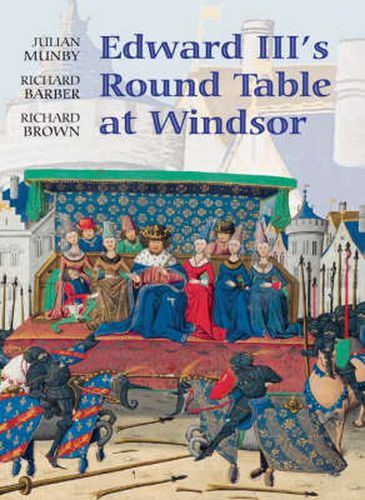Readings Newsletter
Become a Readings Member to make your shopping experience even easier.
Sign in or sign up for free!
You’re not far away from qualifying for FREE standard shipping within Australia
You’ve qualified for FREE standard shipping within Australia
The cart is loading…






NEW LOWER PRICE
The image of King Arthur’s Round Table is well-known, both as Thomas Malory’s portrayal of a fellowship of knights dedicated to the highest ideals of chivalry, and as the great wooden table at Winchester castle. Now a dramatic archaeological find at Windsor castle sheds new light on the idea of a round table as a gathering: the ‘House of the Round Table’ which Edward III ordered to be constructed at the conclusion of his Windsor festival of 1344.
The discovery of the foundation trench of a great building two hundred feet in diameter in the Upper Ward of Windsor castle, allows the reconstruction of that building’s appearance and raises the question of itspurpose. Chronicles, building materials inventories from the royal accounts, medieval romances, and earlier descriptions of round table festivals all confirm the archaeological evidence: at a time when secular orders of knighthood were almost unknown, Edward declared his intention to found an Order of the Round Table with three hundred knights. This grand building, and the Arthurian entertainments he planned for it, would bind his nobles to his cause ata crucial point in his progress to claiming the throne of France.
His ambitious scheme, however, was overtaken by events. Victory at Crecy in 1346 confirmed Edward’s reputation, and the order which he founded in 1348 was themuch more exclusive Order of the Garter, rewarding those commanders who had helped him to win the Crecy campaign. His reputation was assured, the omens for his reign were auspicious; he had the loyalty of his knights and magnates.The Round Table building was abandoned, and eventually pulled down in the 1360s. Thus a major plank in the strategic thinking of one of England’s greatest kings almost became a footnote in history.
Time Team discovered .there [are] indeed foundations of a massive round building in Windsor Castle’s upper ward.
A splendidly produced volume, which gives full credit both to the history and to the archaeology: analysis of the chivalric background, archaeological analysis, discussion of the probable form of the building [and] the early history of Windsor Castle as well as the types of stone used by Edward III’s masons. The book is attractively illustrated, and its appendicesprovide a full text in Latin, with translation, of the building accounts, as well as translations of many of the relevant chronicle extracts. MICHAEL PRESTWICH, THE TIMES LITERARY SUPPLEMENT
$9.00 standard shipping within Australia
FREE standard shipping within Australia for orders over $100.00
Express & International shipping calculated at checkout
NEW LOWER PRICE
The image of King Arthur’s Round Table is well-known, both as Thomas Malory’s portrayal of a fellowship of knights dedicated to the highest ideals of chivalry, and as the great wooden table at Winchester castle. Now a dramatic archaeological find at Windsor castle sheds new light on the idea of a round table as a gathering: the ‘House of the Round Table’ which Edward III ordered to be constructed at the conclusion of his Windsor festival of 1344.
The discovery of the foundation trench of a great building two hundred feet in diameter in the Upper Ward of Windsor castle, allows the reconstruction of that building’s appearance and raises the question of itspurpose. Chronicles, building materials inventories from the royal accounts, medieval romances, and earlier descriptions of round table festivals all confirm the archaeological evidence: at a time when secular orders of knighthood were almost unknown, Edward declared his intention to found an Order of the Round Table with three hundred knights. This grand building, and the Arthurian entertainments he planned for it, would bind his nobles to his cause ata crucial point in his progress to claiming the throne of France.
His ambitious scheme, however, was overtaken by events. Victory at Crecy in 1346 confirmed Edward’s reputation, and the order which he founded in 1348 was themuch more exclusive Order of the Garter, rewarding those commanders who had helped him to win the Crecy campaign. His reputation was assured, the omens for his reign were auspicious; he had the loyalty of his knights and magnates.The Round Table building was abandoned, and eventually pulled down in the 1360s. Thus a major plank in the strategic thinking of one of England’s greatest kings almost became a footnote in history.
Time Team discovered .there [are] indeed foundations of a massive round building in Windsor Castle’s upper ward.
A splendidly produced volume, which gives full credit both to the history and to the archaeology: analysis of the chivalric background, archaeological analysis, discussion of the probable form of the building [and] the early history of Windsor Castle as well as the types of stone used by Edward III’s masons. The book is attractively illustrated, and its appendicesprovide a full text in Latin, with translation, of the building accounts, as well as translations of many of the relevant chronicle extracts. MICHAEL PRESTWICH, THE TIMES LITERARY SUPPLEMENT